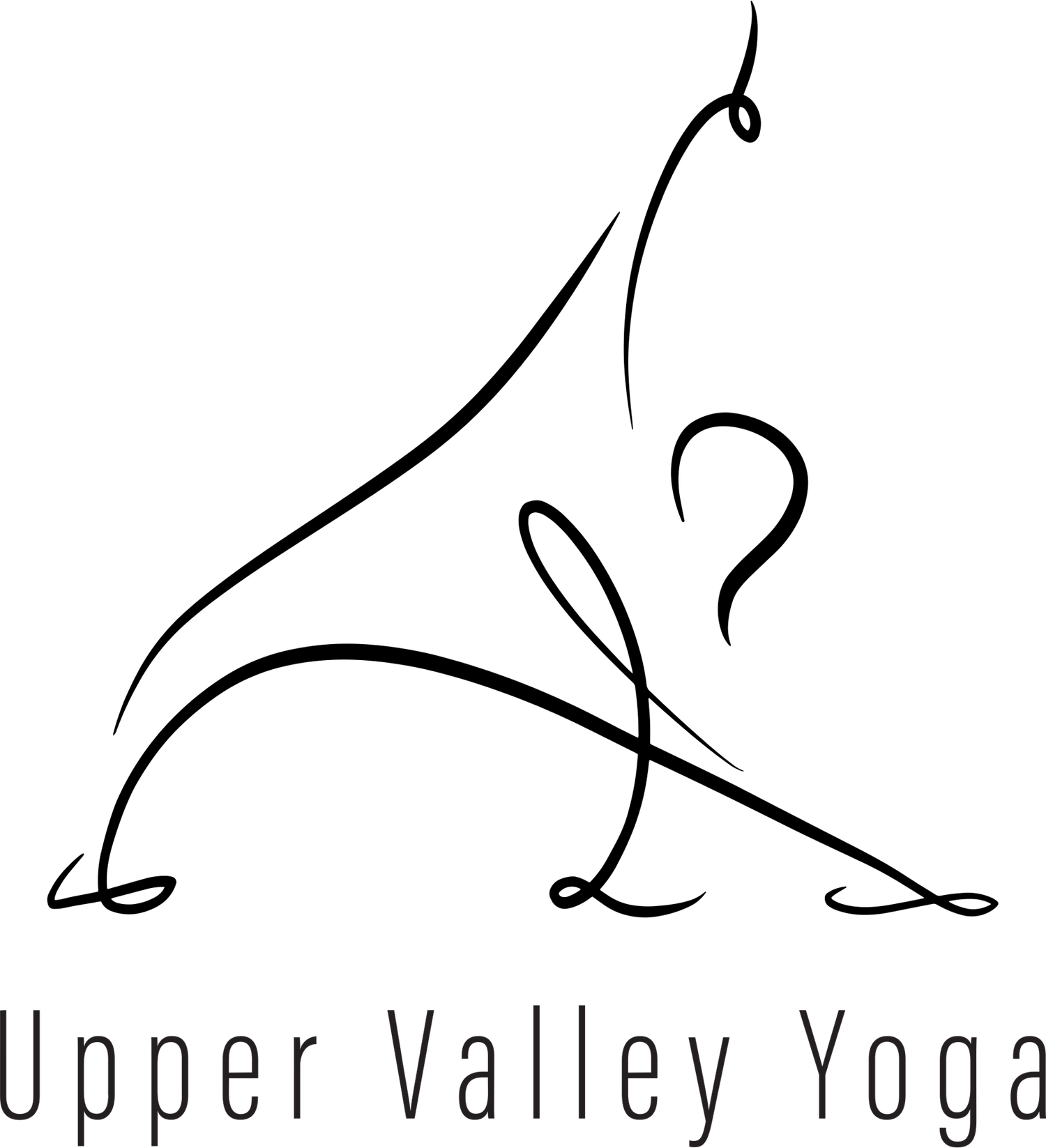Apana Vayu: Downward Moving energy
In my last newsletter I introduced the Prana Vayus, and explored the first of the 5: (confusingly called) Prana Vayu. Now we will look at Apana Vayu.Apana Vayu is the downward current of energy, originating at the naveland descending through the legs and feet. Associated with exhalation,it concerns the body's many processes of elimination, of both theeliminatory system but also reproduction and childbirth. This Vayulives in the realm of the first and second chakras, and as such isconnected to the elements of earth and water. Emotionally, freeflowing Apana Vayu helps us feel safe and grounded enough to let go ofwhat doesn't serve us. Poses that reflect the energy of Apana Vayu mightinclude standing poses, hip openers, poses where our limbs connect tothe earth, another surface like a wall, or another part of the body. Italso includes poses where our limbs cross or touch one another, like inthe pose above, Ardha Baddha Padma Pascimottanasana: one leg crosses theother in half lotus, one arm wraps behind to bind with the foot of thelotus leg.
Initially, the experiences of Prana Vayu and Apana Vayu serve to confine us within the experience of being in a body.
These two Vayus, working in opposition to each other, are at the root ofour being held within the physical body. In the Dhyana Bindu Upanishadthere is a description of this duality: the soul is described as beinglike a bird that has its foot tied by a string to a stone. Prana Vayu isthe force of the bird flapping its wings to soar upwards. Apana Vayu isthe gravitational force—the energy of the rock that draws the bird backdownward. Thus with the breath, we have this experience of both openingupward and being drawn downward. It is in the opposing forces betweenthe two (inhaling, exhaling) that we remain identified with theexperience of the body.
What I find most intriguing about Apana Vayu is something I alluded toin my discussion of Prana Vayu. In Prana Vayu the energy is aboutexpansion, and lift, but embedded in that template is an inherentparadox: inhalation, which informs the expansive and upward energy ofPrana Vayu, requires that the diaphragm actually contract and drawdownward, in order for the lungs to fill. Similarly, though the energyof Apana Vayu is downward, when you exhale, the diaphragm actuallyfloats upward. To feel these seemingly contradictory energies anddirections within the body, try sitting for a few minutes, eyes closed.Feel the natural movement of the breath. Feel the natural buoyant risethat occurs on inhalation, but simultaneously feel the diaphragmcontracting and moving down. Feel on exhalation a clear downward dropand release, but feel also the diaphragm floating upward. The pairing ofopposites within the movement of the vayus within our bodies fascinatesme. The paradoxical experience demonstrates that within exhalation iscontained the intention and energy of inhalation, and vice versa. Thisparadox implies a felt experience of the promise oftransformation—of the ordinary and mundane transformed into somethingelse entirely. And that alchemy of transformation, whereby ordinaryenergies are transformed into something other, hints at the non-ordinaryexperiences of the Self, the promise that yoga offers us the chance tofeel something extraordinary and even transcendent. That process beginsto unfold more when we get to the third Prana Vayu, Samana Vayu, which I will explore in the next newsletter.
As before, I invite you to explore the ways in which you experienceApana Vayu in exhalation, in class, in your practice, and in seatedmeditation. I also encourage you to explore the felt experience of thetwo together, Prana Vayu and Apana Vayu, and the paradoxical nature ofthese energies as described above.

